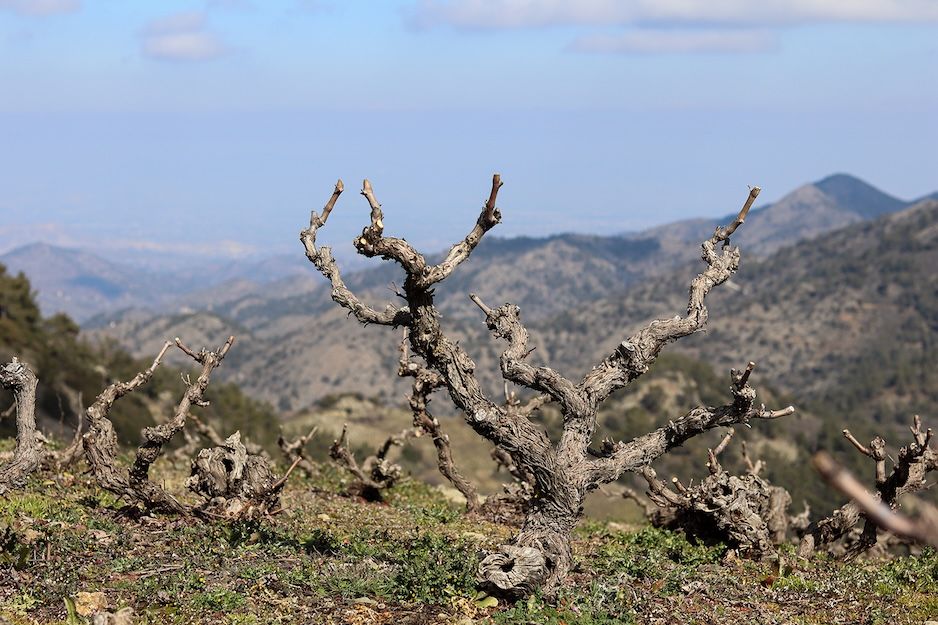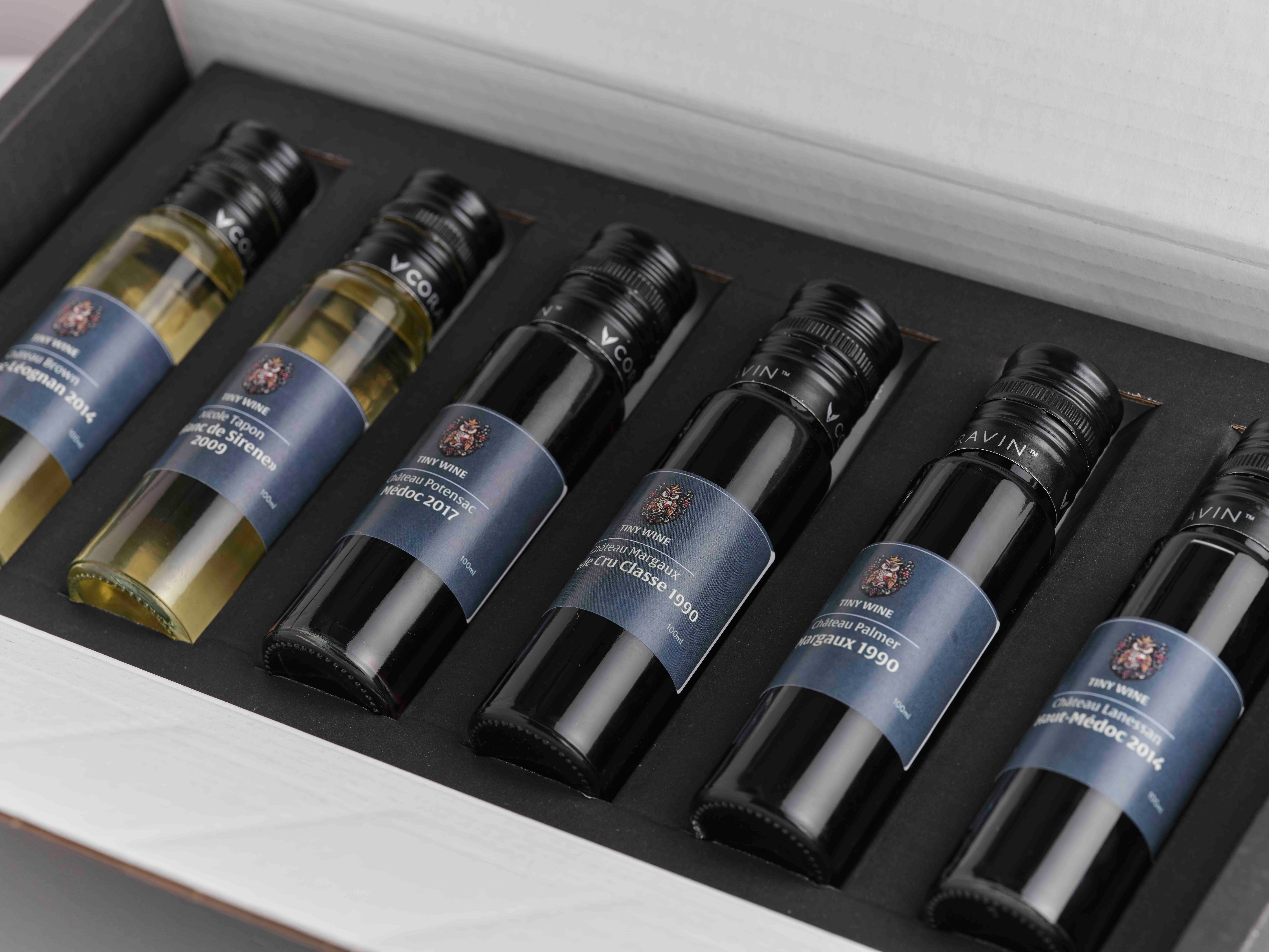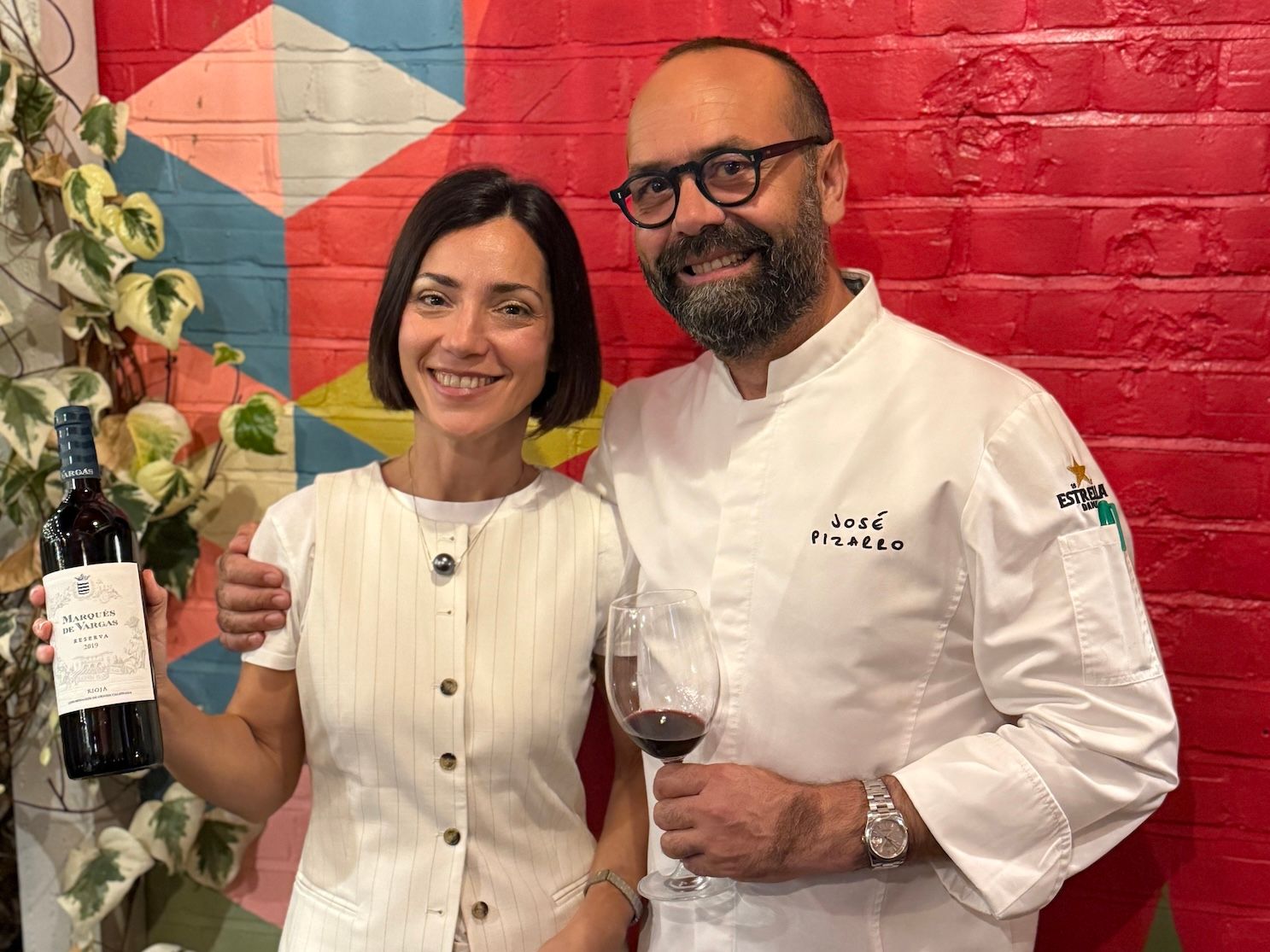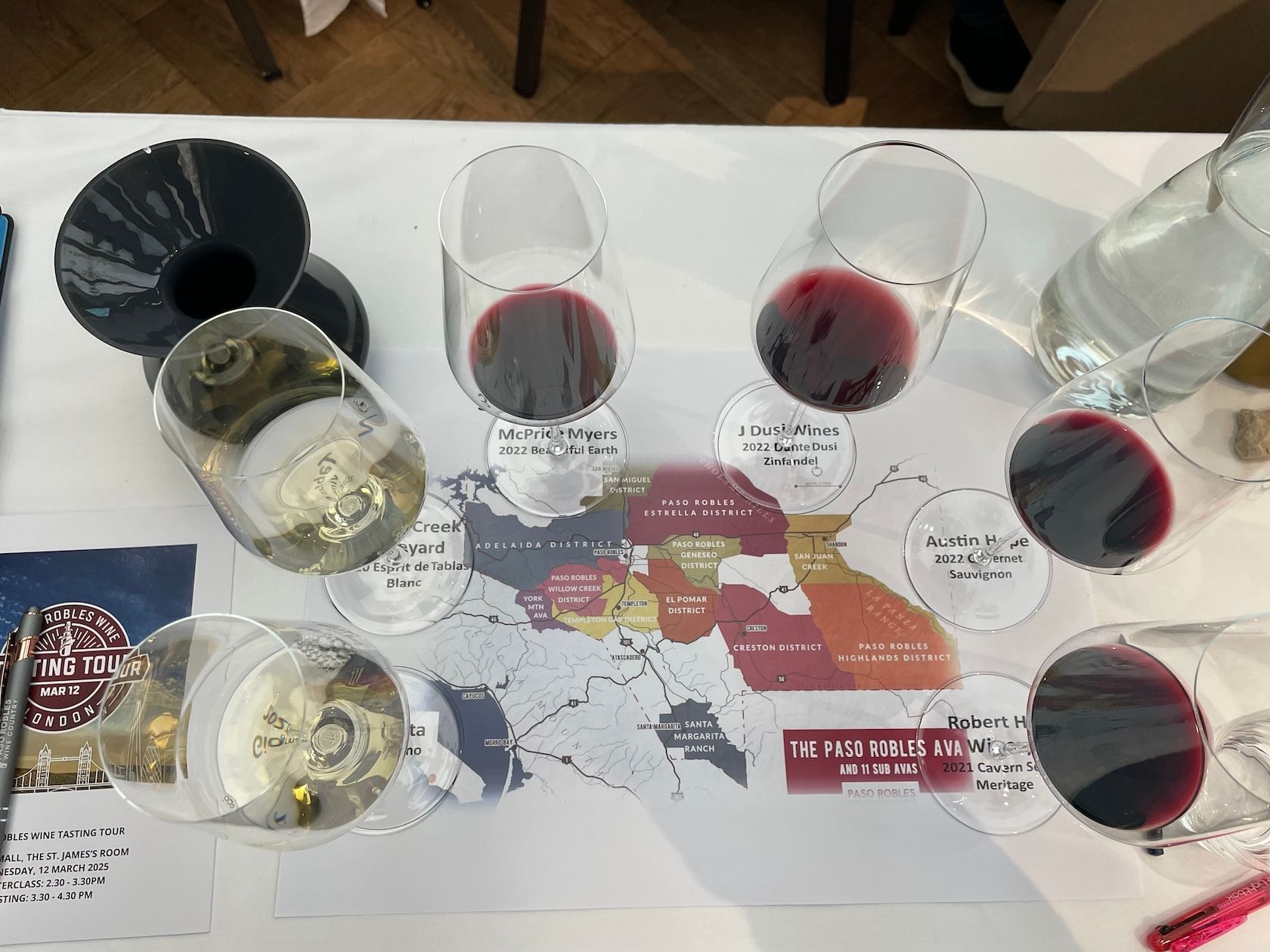“With every vintage we are learning better about how to manage the ripeness,” Mustakis says.
Although Viña San Pedro was established in 1865, it wasn’t until 2002 that it founded Bodega Cachapoal Andes to make the winery’s five fine wines – Altair, Cabo de Hornos, Sideral, Kankana del Elqui and Tierras Moradas. Just 110km south of Santiago and planted 500 metres above sea level, it is clear that this is exceptional terroir influenced by the Andes mountain range that rises above it.
The Andes is responsible for the patchwork of different soil types and also the wide diurnal range that can be as high as 31°C which increases the grapes’ acidity, tannins, flavour and aromatic profiles as well as allowing the fruit to ripen more slowly. Winemaker Gabriel Mustakis who started here in January 2018 has identified six different soil types – a mix of alluvial soils, clay, gravels, silt; prior to arriving at San Pedro he began his career as assistant winemaker for Viña Cono Sur, and then spent seven years as chief winemaker and production manager at Cousiño Macul winery.
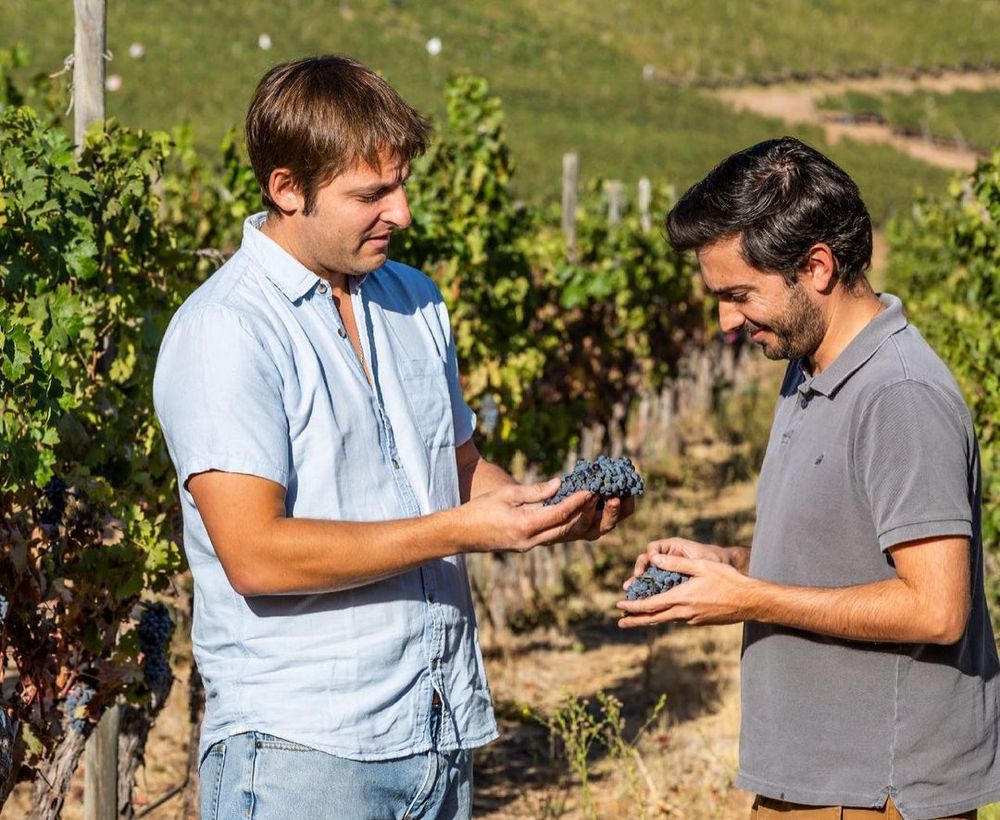
Gabriel Mustakis (l) and Matías Cruzat, winemakers from San Pedro, check the ripeness at harvest
Mustakis, speaking via Zoom, and prior to tasting three of the Altair wines, explains that having made stylistic changes in his first vintage, the Altair 2018, the estate is much clearer about its future path – and that is to express terroir, and to rein back the search for extraction, tannin, wood and super-ripeness, that has dogged some of Chile’s premium wines in the past.
“The idea is to represent our place, the Altair 2018 has lots of polyphenols, but less strong tannins, it is much more drinkable now – but still has really good ageing potential in the bottle,” Mustakis says.
Mustakis has got here by concentrating on the variety of soils on the estate and altering the vineyard management, irrigation and winemaking as a result. He is picking earlier and has managed to get the alcohol down as a result (14.1% abv). Winemaking-wise he is ageing the wine for longer and in larger, less new, oak formats – 22 months in total, the first 16 in 50% new French barrels and the last 6 months resting in 2,000-litre foudres before spending a year in bottle.
Perhaps one of his greatest assets is the way that the Cabernet Sauvignon reacts in Cachapoal, compared to the Maipo Valley
“Here we are just 120 km south but we have much more varied soils, different winds, more reactive tannins, freshness – which is a good way to show Cabernet Sauvignon in terms of elegance, with floral notes, and you can get an iron character in the wine. And with every vintage we are learning better about how to manage the ripeness.”
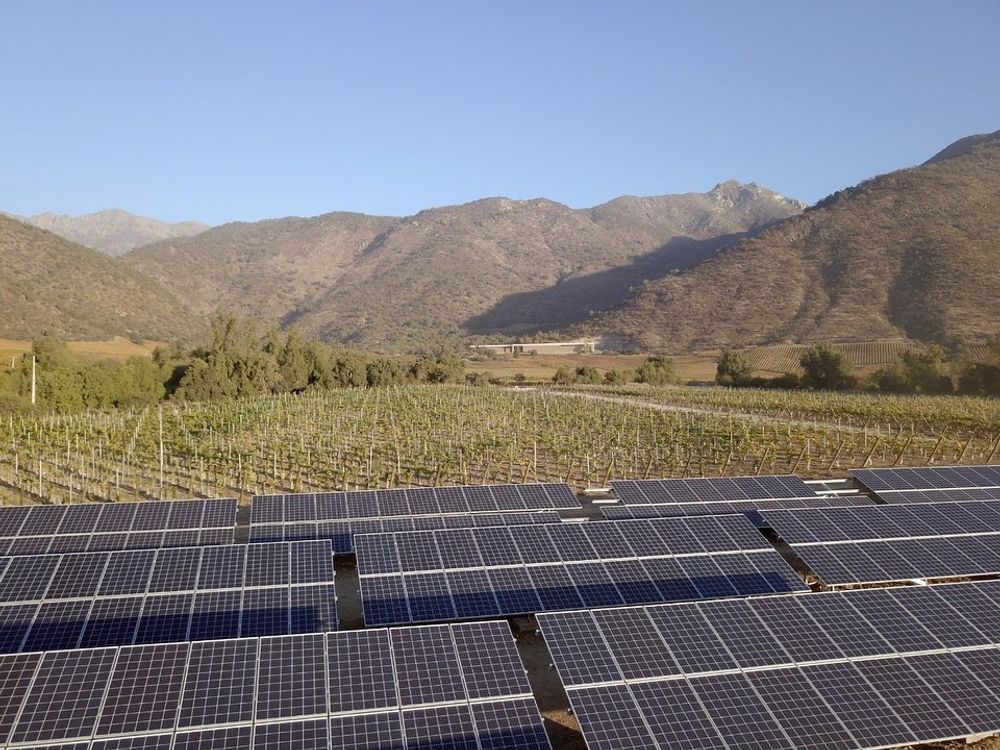
As members of the International Wineries for Climate Action, Viña San Pedro is working to reduce 50% of its carbon by 2030
Because of the estate’s soil study, Mustakis can irrigate more specifically plot-by-plot, and manage canopies which helps the team get ripeness in the fruit in mid-March as oppose to April – but it also has a sustainability benefit too. San Pedro is committed to reducing its carbon footprint so that by 2050 it will be making a positive contribution.
The winery has installed solar panels, swapped steel tanks for concrete and working on temperature control within the winery. Mustakis is doing this in tandem with experiments within the cellar – importing clay vessels from Italy to work on mouthfeel – adding a little bit of new technology every year.
What makes this tasting of Altair 2018 so fascinating is that it illustrates how, in such a short space of time, this winemaking team has come a very long way in terms of changing the style into one that is more expressive and genuinely exciting.
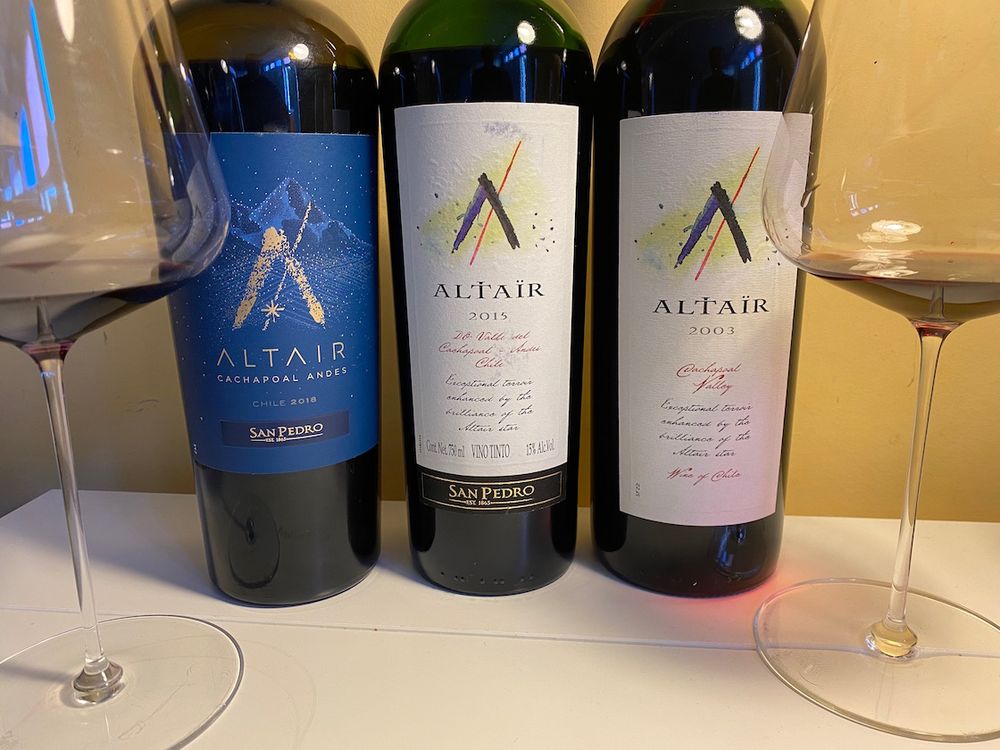
Tasting the three Altair vintages, June 2, 2021
Altair 2018, D.O. Valle del Cachapoal Andes, San Pedro, Chile
The 2018 vintage heralds this change of winemaking and image. Mustakis, (whose first vintage this is remember), has increased the amount of Cabernet Sauvignon in the blend (from 71% in the debut vintage 2003 to 95% in 2018) and reduced the Carmenere which, along with Cabernet Franc and Syrah, make up the other 5%. Ironically, this vintage compared to the super-ripe fruit-forward 2015, has less of the typical cassis fruit bomb Chilean Cabernet Sauvignon feel and more herbal, savoury and ferrous notes creeping in, making this a more complex and enjoyable wine.
To look at the wine is deep ruby, opaque; the nose has an appealing wildness, wild blackberry fruit and a strong herbal note – pine almost – with a ground, earthy savoury Indian spice, smoke, tobacco and a ferrous quality on the finish. It’s really intriguing, in a good way. On the palate, the wine is seductively smooth, velvety tannins, really approachable now and drinking well. The fruit dial is still black but interestingly more towards blackberry than blackcurrant, mulberry even, with dark chocolate too. The wine has a decent dry, textured finish but Mustakis has also managed to increase the acidity in the wine and it feels complete, with structure enough to give it good ageing potential for a couple of decades if needed.
The changes to the winemaking have definitely worked well, and in keeping with the way a lot of premium wines are going in South America – more towards fresher expressions of exceptional terroir.
Altair 2015, D.O. Valle del Cachapoal Andes, San Pedro, Chile
So interesting to then taste the 2015 which just felt like it had been made in a different place and time – so old-school Chile – and incredible how these recent changes have made such a refreshing impact on the wine. Deep ruby with deep cherry red edging; the nose was almost like Ribena in contrast to the 2018, so overt is the super-ripe, intense cassis nose. Weirdly it has 14% less Cabernet Sauvignon than the 2018 with the shortfall made up more or less by the 15% Cabernet Franc – which actually has retained freshness at the core of the wine, and belies its 15.3% abv.
Mustakis admits that the winery was chasing a super-ripe expression of fruit here and how! But, despite the rounded, fruity palate there is still 5.36 G/l acidity and there is a decent texture to the wine, coming partly from the decision to use 225-litre French barrels (50% new) and ageing for 20 months, the wood nicely integrated by the concentration of fruit.
Altair 2003, D.O. Valle del Cachapoal Andes, San Pedro, Chile
What a treat to then try the 2003 which was the first ever Altair produced which was made from very young vines and was ‘one step further back’ in terms of the progression of winemaking here – just 15 months ageing in 100% new 225-litre French barrels. The cepage is totally different again being 71% Cabernet Sauvignon, 17% Carmenère, 6% Merlot, 4% Syrah and 2% Cabernet Franc.
The wine was included in the tasting to show the ageing potential of Altair and what a wonderful evolution it is. The colour is a sumptuous ox blood with medium tawny edging, almost transparent; the nose is full of gorgeously evolved Cabernet Sauvignon fruit with cigar box and leather chair etc; the palate is still remarkably fresh and structured, it shows its wood, mainly in the texture but also in a slight resinous grip on the tail end. But this is a treat and, although the framework is still there to carry it on for at least another decade, this is in a fine place right now.
The Viña San Pedro wines are imported into the UK by Enotria&Coe, which is a supplier partner of The Buyer. Read more about them here.




